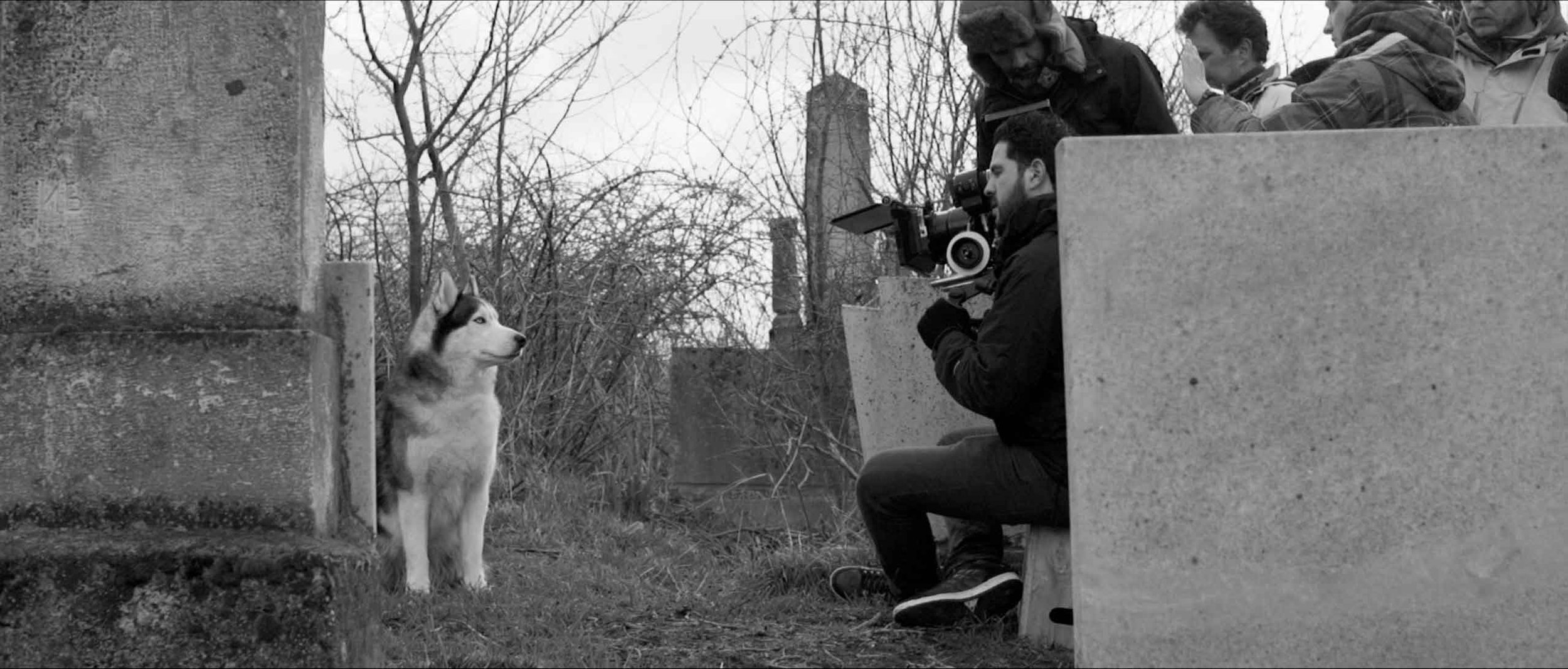8 Quick Tips For Filming Animals On A Film Set
Following up on my previous blog post about how I directed a Hardwell music video in the snowy mountains of Bulgaria that involved working with a dog, I wanted to share some tips on how we handled the challenge of working with an animal on a film set.
Although we worked with a film production-trained dog, I think working with animals in front of a camera can be challenging because they don’t speak our language, making their behavior unpredictable and hard to control. A well-trained dog, cat, or horse might be ‘pretty easy,’ but imagine working with a snake, a goose, or a lizard!
How To film animals?
If you decide or have to work with animals on a film production set and want your film to be purr-fect, you'll want to follow the eight quick tips I’ve summed up below!
Collaborate with an animal wrangler
At home, I have always lived with pets. During that time, I learned that animals need to know who is in charge. If a dog or a cat, for example, senses no one is the boss, they will dominate their surroundings, and that is not something you want to experience while working with the immense time and money pressure of a film production.
For the Hardwell music video, we worked with an animal wrangler who understood precisely how the animal was trained and how to deal with it.
The animal wrangler knew what the animal could and couldn’t do and elicited a specific response when necessary. I gave that person instructions on what I wanted to see from the animal so that they could do their magic with the dog. If you want to work with an animal on set, my first tip is to get an animal wrangler on board!
Use food & smells
The secret trick the animal trainer used most of the time for the Hardwell music video to get the dog to do what we wanted was using food and smells.
The secret sauce in getting an animal to do what you wish is providing a rewarding experience. Food is an excellent motivator for almost any animal to get it to do what you want, and having a tasty treat and keeping a calm voice at all times was how we made it happen.
Keep it realistic
Unfortunately, animals don’t speak our language, so getting the dog to do precisely what I wanted for the music video was sometimes very tough. We quickly discovered that it’s better to keep it simple by using simple movements and shooting short takes than add complex moves with lots of different queues.
This approach meant letting the dog walk from here to there, look over here or lay down over there, which was way easier than getting the dog to do circus movements. Getting some visual artists involved would have been better if I wanted to go down that road.
Slowmo & high resolution
Something that also helped us was filming all the sequences that involved the dog in slow motion. As a bonus, this visual effect added some magic to the dog’s appearance in the final video and allowed us more room in the edit if the dog got distracted during a take. Another trick that might be helpful is filming on a 4K, 6K, or 8K resolution so you can crop and zoom in on the shot in case the animal is giving you a hard time positioning it.
Keep distractions to a minimum
I also experienced the dog was easily distracted when too many people were involved in getting the shot done. Therefore, when we filmed a take, unnecessary crew members had to leave temporarily in the background and be quiet so the dog could focus on the animal wrangler. I think the smaller your team onset will be and the more you can avoid busy areas whenever possible, the easier it will be for the animal to stay focused.
Schedule enough time
I also quickly noticed that, although this dog was specially trained for this production, taking the shot we needed took at least twice as long as working with the actors.
Unfortunately, animals don't understand the principle of time, so I realized that acting rushed would probably have the opposite effect. The animal wouldn't work faster because of potential over time, and we would only risk losing the animal's focus and involvement in the project.
So, we skipped a few shots and scheduled enough time to get the shots with the animal for the following day to ensure we didn't go over time.
Keep the animal happy
Like working with a film crew and actors, high-quality nutrition and proper breaks are the secret ingredients for every successful film set. I’ve noticed over the years that when people on a film set are well-fed and relaxed, they are more likely to go the extra mile for the film production. So, the more you keep the animal (and its trainer) happy, comfortable, and well-fed, the more likely they’ll help you get whatever you want from them.
Have patience and never lose your temper
And finally, my final tip is to have a lot of patience and never lose your temper. I noticed that the dog would never do exactly what I wanted immediately.
It wandered out of frame, didn’t hit its marks, did something entirely different, or got tired and lost concentration. It might take a little while to find a way to work with an animal on set and get the desired results, but once you’ve found that, it can be pure magic!
Wrapping Up
So there you have it, my eight tips for filming with animals. Be patient, be prepared, and above all else, enjoy the experience! The more relaxed you are, the better the film shoot will go.
Frequently asked questions about filming animals (FAQs)
What are the legal requirements for filming animals?
The legal requirements for filming animals vary by country and jurisdiction. In the US, the American Humane Association (AHA) monitors animal action on set to ensure safety and well-being, adhering to animal welfare standards.
The United States Department of Agriculture (USDA) enforces the Animal Welfare Act, which sets minimum standards of care for animals in filmed media, including television and feature films. Always verify local laws and regulations in the production location.
What are the best practices for working with animals on set?
Key practices include:
Utilizing trained and experienced animal handlers.
Providing proper care and housing.
Collaborating with animal welfare organizations to ensure safety.
Understanding the natural behaviors and needs of the animals to minimize unnecessary stress.
Ensuring enough time is allowed for the animals to become familiar with the set and camera setups.
How can animals be prepared for their roles?
Preparing animals involves:
Training them to perform desired actions.
Rehearsing scenes to promote a safe and comfortable environment.
Using patient, skilled trainers who can teach animals tricks without causing them to become tired or stressed.
What are the challenges of filming animals?
Challenges include:
Maintaining animal safety and well-being.
Managing unpredictable behaviors and the logistics of transport and care.
Providing enough time and patience to capture the desired shots.
Coordinating with crew and actors to ensure a smooth shoot.
What are the ethical considerations when filming animals?
Ethical filming requires:
Ensuring animal welfare by preventing unnecessary stress and discomfort.
Obtaining informed consent from the animal's caretakers.
Considering legal restrictions on using specific animals or breeds in productions.
How do filmmakers ensure the safety and realistic portrayal of animals in films?
Ensuring safety and realism involves:
Following strict guidelines and safety controls set by animal welfare organizations.
Utilizing cameras and angles that allow for safe distances between humans and animals.
Keeping shoots as brief as possible to protect the animals from fatigue.
What additional measures are taken to protect animals during complex scenes?
For complex scenes, measures include:
Detailed pre-shoot training sessions where animals learn specific behaviors.
Dedicated spaces on set for animals to rest and refresh, including access to water and shade.
Experienced crew members who specialize in animal filming to oversee and control the environment.
How is the filming schedule adjusted when animals are involved?
Adjusting the schedule for animal involvement requires:
Allotting extra time for animal training and breaks to keep them engaged and happy.
Planning shots around the animal's natural behavior and moment of peak concentration.
Marking specific times when animals are most active and capable of filming to maximize efficiency and safety.






























